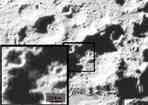NASA has selected Honeywell Technology Solutions Inc. in Columbia, Md., to provide Ground Systems and Mission Operations support.
The total maximum ordering value of the cost-plus-award fee, indefinite-delivery/indefinite- quantity contract is $450 million. The effective ordering period is from Nov. 1 through Oct. 31, 2016. The work will be performed at NASA's Goddard Space Flight Center in Greenbelt, Md.
Under this contract, Honeywell Technology Solutions Inc. will support a wide range of mission operations in all phases of the mission life cycle, including concept studies, formulation development, implementation, operations, sustaining engineering and decommissioning. The contractor also will support operations studies, systems engineering, design, implementation, integration and testing of ground systems and operations products, mission operations and sustaining engineering.
This contract will support NASA's Earth Science Mission Operations and Space Science Mission Operations including: Aqua, Aura, Terra, Tropical Rainfall Measuring Mission and Earth Observing-1, Advanced Composition Explorer, Geotail, Lunar Reconnaissance Orbiter, Rossi X-ray Timing Explorer, Solar Dynamics Observatory, Solar and Heliospheric Observatory and Wind.



